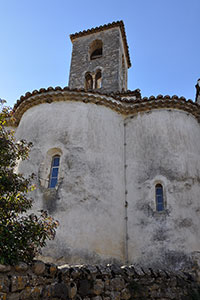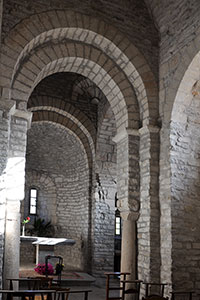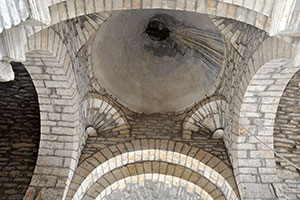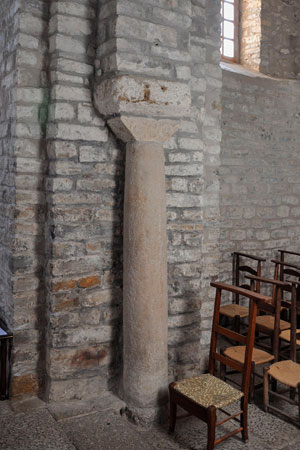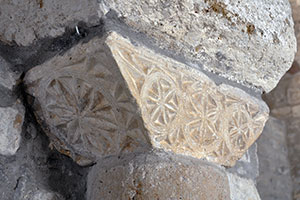The church of Saint-Pierre de Sauveplantade was built on a site with ancient precedents: in Roman times there may have been a temple dedicated to Jupiter. By the 7th century a church dedicated to Saint Peter had already been erected there; at that time Aginus and his wife Petronilla donated it to the bishop of Viviers together with several adjoining properties.
In the Carolingian period it belonged to the county of Vivarais and was the centre of the territory known as Silvatensis, which later passed into the hands of various seigneurial families, among them the Vogüé. In the 11th century it became a Benedictine priory dependent on the Abbey of Cruas (Ardèche). Works were then carried out to improve the site and the church was rebuilt. Besides serving as the priory’s chapel, it also fulfilled parochial functions. This very modest priory survived until the Revolution.
The church is a simple building consisting of a single nave with a transept, opening onto three semicircular apsidal chapels. It preserves decorative elements from an earlier construction, such as the trapezoidal capitals. In the Middle Ages it also served as the burial place of the lords of Vogüé. No visible remains of the priory buildings have survived.

Schematic plan of the church
- SAINT-JEAN, Robert (1991). Vivarais Gévaudan romans. La Pierre-qui-Vire: Zodiaque
- VOGÜÉ Melchior de (1906). Une famille vivaroise. Sancerre: Pigelet


